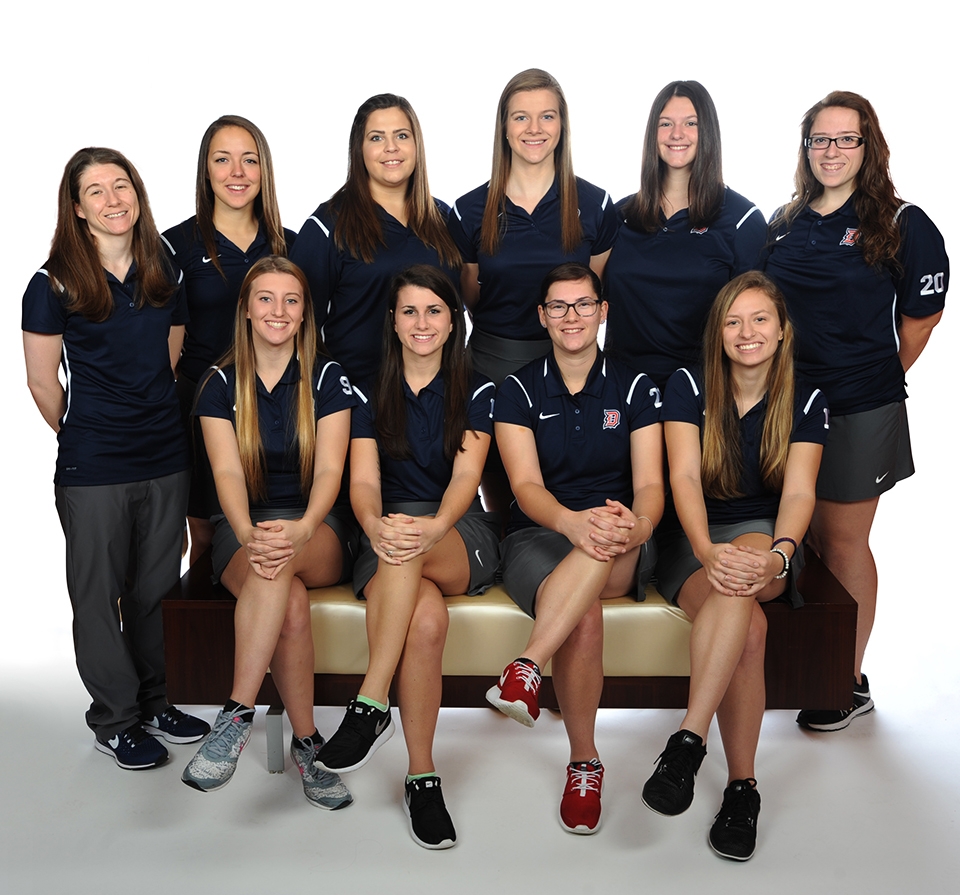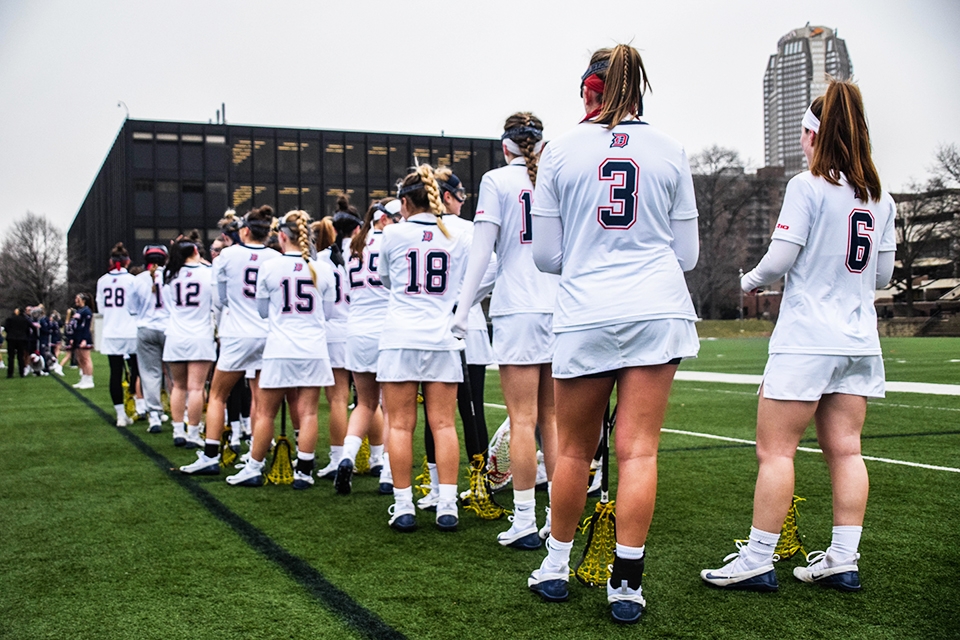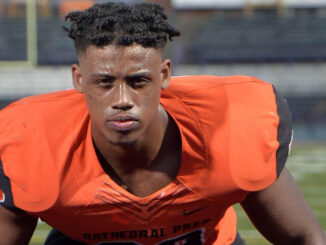
Dom Ferro | Staff Writer
Oct. 22, 2020
As the United States evaluates its complicated racial history with ongoing Black Lives Matter protests across the country, Duquesne University continued the discourse on racial equity with an event titled, “The Rooney Rule & What’s Next: Equity & Access in Athletics & Beyond.”
The Rooney Rule is the National Football League’s policy that requires all teams to meaningfully interview at least one minority candidate for head coaching and senior football operation jobs. The rule was instituted in 2003 and is named after Duquesne alum Dan Rooney.
The event was partially pre-recorded on Sept. 29 at 2 p.m. and was moderated by Duquesne University President Ken Gormley in the Duquesne Student TV studio. He was joined remotely by guests N. Jeremi Duru, a law professor at American University and sports law expert, and Jim Rooney, Dan’s son and the author of A Different Way to Win, an account of his father’s life and legacy.
The second half of the event was live-streamed to the public on Thursday, Oct. 15 at 1 p.m., and this time included co-moderator Brian Baptiste, La Salle University’s athletics director. The symposium was kicked off by Atlantic 10 Commissioner Bernadette McGlade.
McGlade said the newly-formed commission “will allow the A-10 to effect positive change in the area of social justice and equity for all.”
After the introduction by McGlade, the virtual audience was shown the pre-recorded segment featuring Gormley, Duru and Rooney. Gormley explained the background of the Rooney Rule and its relevance today.
“Today we’re thrilled to host a discussion about the historic origins, impact and potential future promise of the Rooney Rule,” Gormley said. “Duquesne University is the ideal place to have this conversation because the Rooney Rule is named after Dan Rooney, one of Duquesne’s most distinguished alums. Former owner of the hometown Pittsburgh Steelers, an iconic figure in the world of professional sports and later ambassador to Ireland, appointed by Barack Obama.”
Dan Rooney was born in 1932 in Pittsburgh, one year before his father, Art, founded the Steelers in 1933.
In 1960, Dan began working for the Steelers as director of personnel. Less than a decade later, Rooney aided in the hiring of Head Coach Chuck Noll, eventual four-time Super Bowl champion and Hall of Fame inductee.
Rooney was later appointed team president in 1975 and was given full operational control of the franchise. Meanwhile, his father still served as chairman and face of the organization.
While working for the Steelers, Dan was widely considered to be one of the league’s biggest social activists. In the 1960s, Rooney was introduced to Bill Nunn, a sportswriter for the Pittsburgh Courier, a primarily Black news publication.
As a sportswriter for the Courier, Nunn focused on football programs at historically Black colleges and universities (HBCU). Every college football season, Nunn would name the one and only “Black College All-American.”
Rooney and the Steelers took notice of Nunn’s coverage of HBCU athletes and his criticism toward the Steelers for not drafting certain minority players. Rooney met with Nunn and hired him as a part-time scout; the Steelers proceeded to draft more players from HBCUs than any other professional football team from 1968-80, and won a then-record four Super Bowls in the process.
During the 1970s, the Steelers were one of the first dynasties in the NFL, and their success is due in part to Nunn and Rooney’s evaluation of the overlooked HBCU athletes.
As president of the Steelers, Dan Rooney continued to fight for disenfranchised individuals, especially minority coaches in the NFL. In 2003, the Rooney Rule was introduced and helped lead to the hiring of current Steelers Head Coach Mike Tomlin.
Duru explained the reason the rule was introduced: “After the 2001 season, Tony Dungy — current Hall of Famer, and Dennis Green — one of the greatest head coaches for the Minnesota Vikings — were both terminated within two weeks from each other and it really caused a commotion in the NFL, but also outside the NFL.”
The reason for the commotion was that the NFL was now only left with one Black head coach out of its 32 teams. Furthermore, Dungy had a winning record at the time of his firing, and Green had just suffered his first losing season in 10 years.
Jim Rooney said the NFL consists of “77% [minority players] and less than 5% of NFL coaches are minorities. That just doesn’t make sense. The conclusion from sports law experts was that this was employment discrimination in the NFL.”
Duru provided evidence that was collected by outside activists and lawyers brought to the NFL.
“Black head coaches won 2.7 more games per season than white head coaches — almost three games in a 16-game season. And in the year they were terminated, almost 1.5 more games (won).”
Duru continued, “The conclusion wasn’t that Black people were better coaches; the conclusion was Black coaches were being fired at a much higher rate.”
Frederrick Douglas “Fritz” Pollard was the first minority head coach in the NFL when he was hired in the 1920s. From the time he was a head coach to the installation of the Rooney Rule in 2003, there were a total of only six minority head coaches.
With the overwhelming evidence showing racial inequity in the league, the Rooney Rule was implemented immediately.
Initially, the rule was working. At the start of the 2006 season, the overall percentage of African-American coaches had jumped to 22% from the 6% mark it stood at prior to the Rooney Rule’s installation.
Unfortunately, the rule has not been as effective in recent years.
Since the rule was instated there have been more minorities hired in a short time period; nevertheless, many of the same non-white coaches lost their jobs after only a few seasons.
Currently, the best look we can get at how the rule is doing in today’s world is to look at the 2019 season. Eight NFL teams had head coaching vacancies; only one team, the Miami Dolphins, hired a non-white coach.
“Many people view the results as being disappointing,” Baptiste said to Rooney. “The NFL only has three minority head coaches [and] two minority general managers. How would you assess the league’s progress since the advent of the Rooney Rule? Is there a better way to make sure organizations are acting in good faith and actually following the parameters of the Rooney Rule?”
“Unfortunately, we are back to the numbers from 2003,” Rooney responded. “My father would be disappointed.”
Gormley then chimed in, asking, “Have we been bold enough? Do we need to take the foundation of the Rooney Rule and ratchet it up in new ways if we are really going to be successful, and get concrete wins when it comes to diversity, equity and inclusion when it comes to programs and initiatives?”
The NFL is trying to adapt the rule to modern times and now requires a minority candidate be interviewed for all senior football operations positions.
“The NFL is trying to strengthen the rule to meet the challenges of the day,” Duru said. “Making sure there is a clear penalty and [letting] folks know if they don’t do this, there will be punishment. The foundation is strong. The boldness is in the enforcement and penalty.”
Rooney agreed with Duru’s assessment of strict punishment for not following the rule. He also suggested changing the rule to enforce a meaningful interview for two minority candidates.
“If you only have one minority candidate in the pool, you almost reinforce bias. You increase by one or even more than that, you increase the odds of hiring a minority candidate.”
The Rooney Rule has also gotten traction outside of football. The Oregon state legislature passed a law requiring any team looking for a coach to interview at least one person of color. There has been a push from the NCAA to adapt their own Rooney Rule.
Outside of sports, companies such as Pinterest and Facebook have similar rules set in place for hiring processes related to diversity.
“The journey that’s been traveled for African-American coaches has been a long one,” Duru said. “From “Fritz” Pollard in 1921 to the next hiring of a non-white coach, Art Shell, in 1989, to just over a decade later the Rooney Rule being introduced.”
A related issue is the lack of minority candidates available to interview. Duru believes part of solving that issue is getting more minorities on the pipeline to even be considered for a head coach position.
With the solid backbone of the Rooney Rule, the NFL is on the right path to racial equity but the job is not finished. The rule needs adapted and it must be ever-changing, because social science is not solved with one rule. The rule has the potential to continue to grow outside of football and become a national policy for workplace diversity.
While the event was streamed live, it is available to rewatch on YouTube, titled “The Rooney Rule & What’s Next: Equity & Access in Athletics & Beyond,” on the Duquesne University Conference & Event Services YouTube channel.




